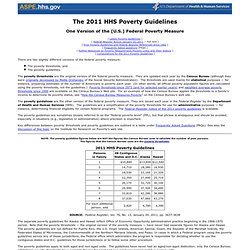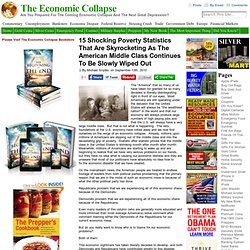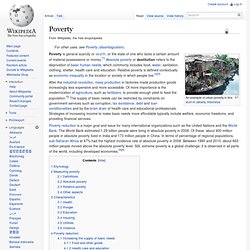

What is Poverty? As of July 1, 2013 ThinkQuest has been discontinued.

We would like to thank everyone for being a part of the ThinkQuest global community: Students - For your limitless creativity and innovation, which inspires us all. Teachers - For your passion in guiding students on their quest. Partners - For your unwavering support and evangelism. Parents - For supporting the use of technology not only as an instrument of learning, but as a means of creating knowledge. We encourage everyone to continue to “Think, Create and Collaborate,” unleashing the power of technology to teach, share, and inspire.
Best wishes, The Oracle Education Foundation. Population below poverty line by country - Thematic Map - World. 2011 HHS Poverty Guidelines. [ Latest Poverty Guidelines ] [ Federal Register Notice, January 20, 2011 — Full text ] [ Prior Poverty Guidelines and Federal Register References Since 1982 ] [ Frequently Asked Questions (FAQs) ] [ Further Resources on Poverty Measurement, Poverty Lines, and Their History ] [ Computations for the 2011 Poverty Guidelines ]

GlobalPovertyProject's Channel. Peter Singer: Extreme Poverty. Facts about Children and Poverty. 15 Shocking Poverty Statistics That Are Skyrocketing As The American Middle Class Continues To Be Slowly Wiped Out. The "America" that so many of us have taken for granted for so many decades is literally disintegrating right in front of our eyes.

Most Americans are still operating under the delusion that the United States will always be "the wealthiest nation" in the world and that our economy will always produce large numbers of high paying jobs and that the U.S. will always have a very large middle class. But that is not what is happening. National Poverty Center. How does the United States measure poverty?

The United States determines the official poverty rate using poverty thresholds that are issued each year by the Census Bureau. The thresholds represent the annual amount of cash income minimally required to support families of various sizes. The methodology for calculating the thresholds was established in the mid-1960s and has not changed in the intervening years. The thresholds are updated annually to account for inflation.[1] A family is counted as poor if its pretax money income is below its poverty threshold. A sampling of the poverty thresholds for 2010 is included in the table below. SOURCE: U.S. Poverty guidelines are a simplified version of poverty thresholds and are issued by the Department of Health and Human Services to determine financial eligibility for certain federal programs. How many people were poor in 2010? In 2010, 15.1 percent of all persons lived in poverty. How has poverty changed over time?
SOURCE: U.S. Poverty Facts and Stats. This figure is based on purchasing power parity (PPP), which basically suggests that prices of goods in countries tend to equate under floating exchange rates and therefore people would be able to purchase the same quantity of goods in any country for a given sum of money.

That is, the notion that a dollar should buy the same amount in all countries. Hence if a poor person in a poor country living on a dollar a day moved to the U.S. with no changes to their income, they would still be living on a dollar a day. The new poverty line of $1.25 a day was recently announced by the World Bank (in 2008). For many years before that it had been $1 a day.
But the $1 a day used then would be $1.45 a day now if just inflation was accounted for. The new figures from the World Bank therefore confirm concerns that poverty has not been reduced by as much as was hoped, although it certainly has dropped since 1981. Poverty. Poverty is general scarcity or dearth, or the state of one who lacks a certain amount of material possessions or money.[1] Absolute poverty or destitution refers to the deprivation of basic human needs, which commonly includes food, water, sanitation, clothing, shelter, health care and education.

Relative poverty is defined contextually as economic inequality in the location or society in which people live.[2][3] After the industrial revolution, mass production in factories made production goods increasingly less expensive and more accessible. Of more importance is the modernization of agriculture, such as fertilizers, to provide enough yield to feed the population.[4] The supply of basic needs can be restricted by constraints on government services such as corruption, tax avoidance, debt and loan conditionalities and by the brain drain of health care and educational professionals.
Etymology The English word "poverty" via Anglo-Norman povert.